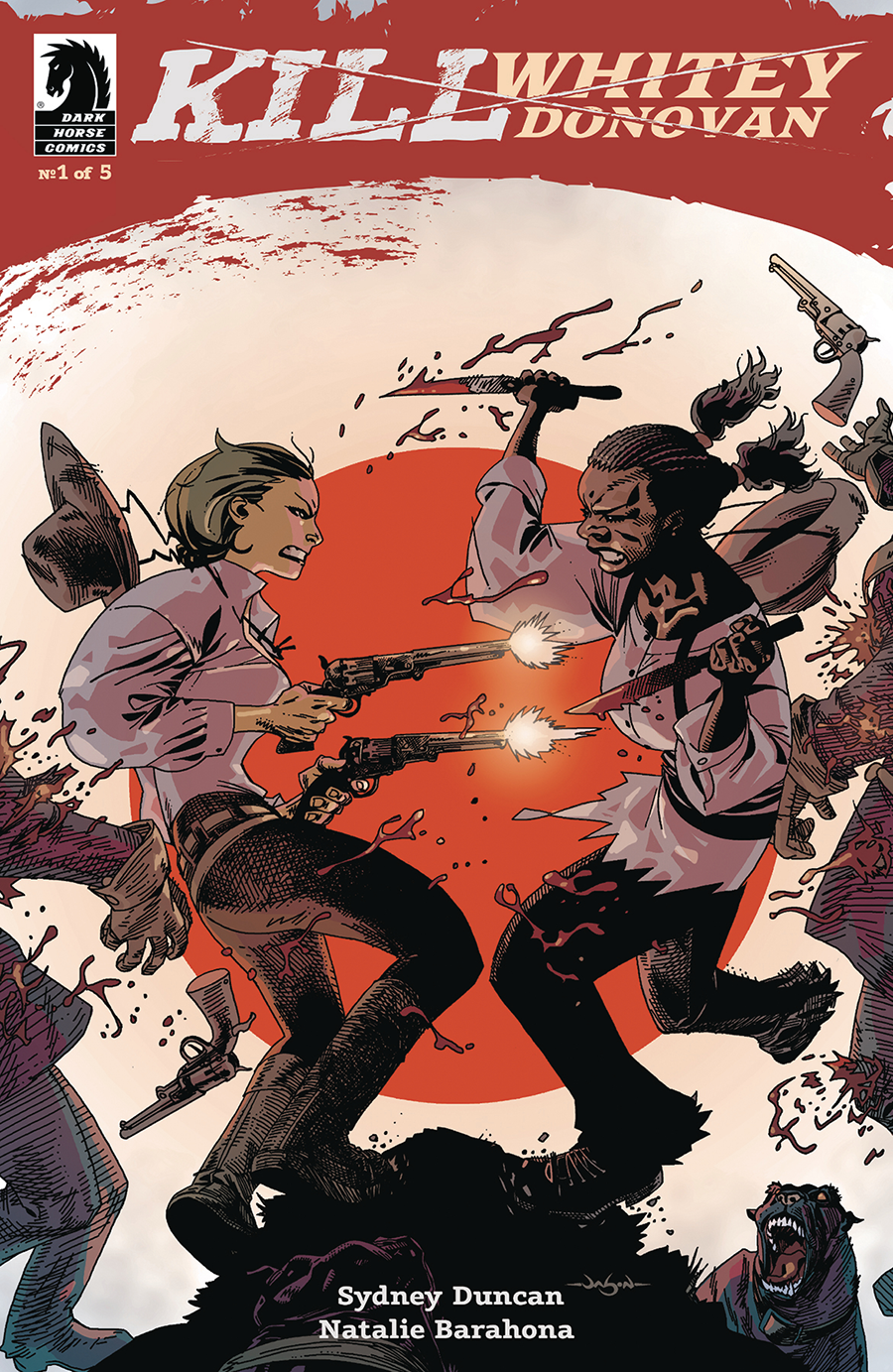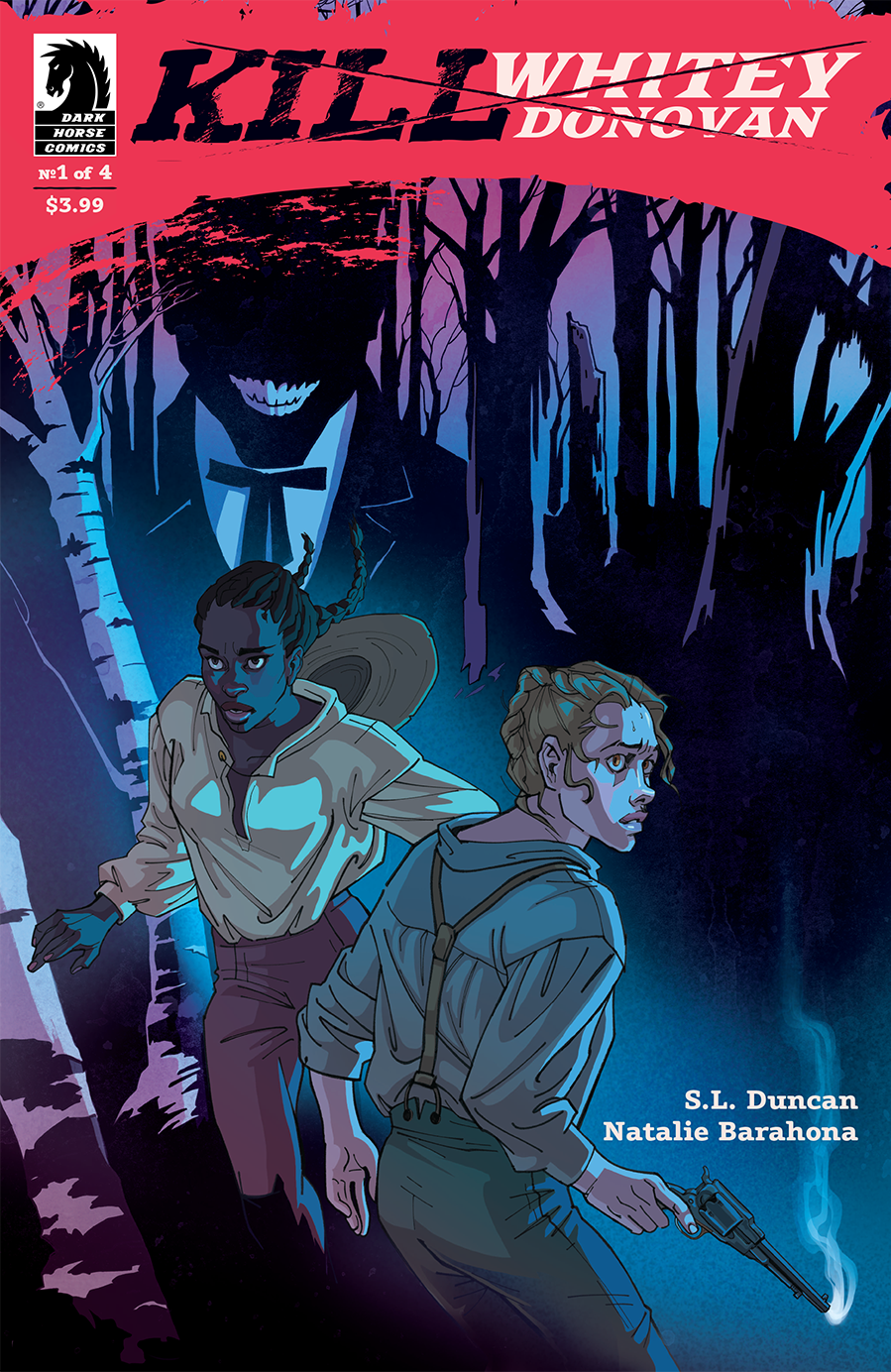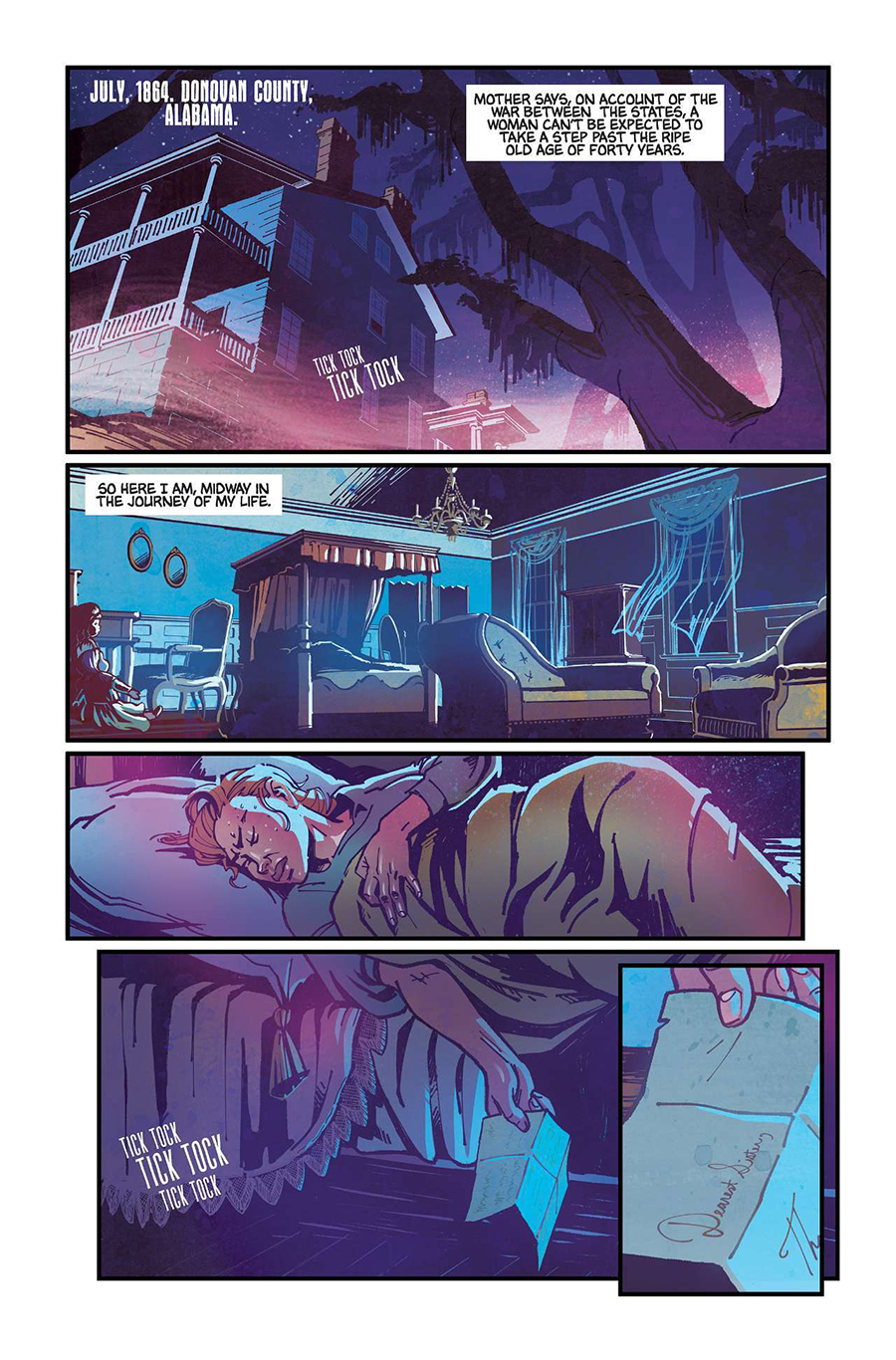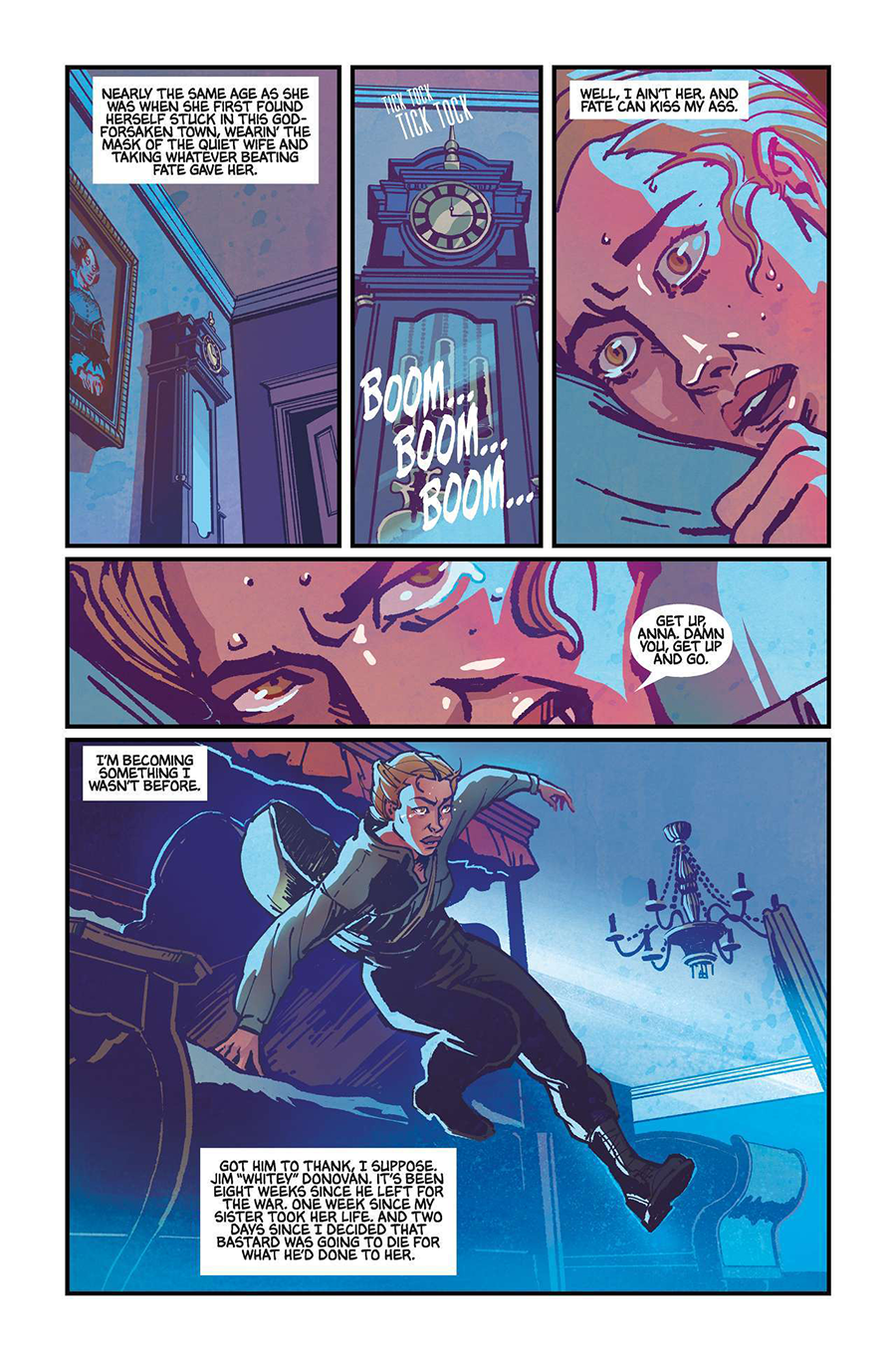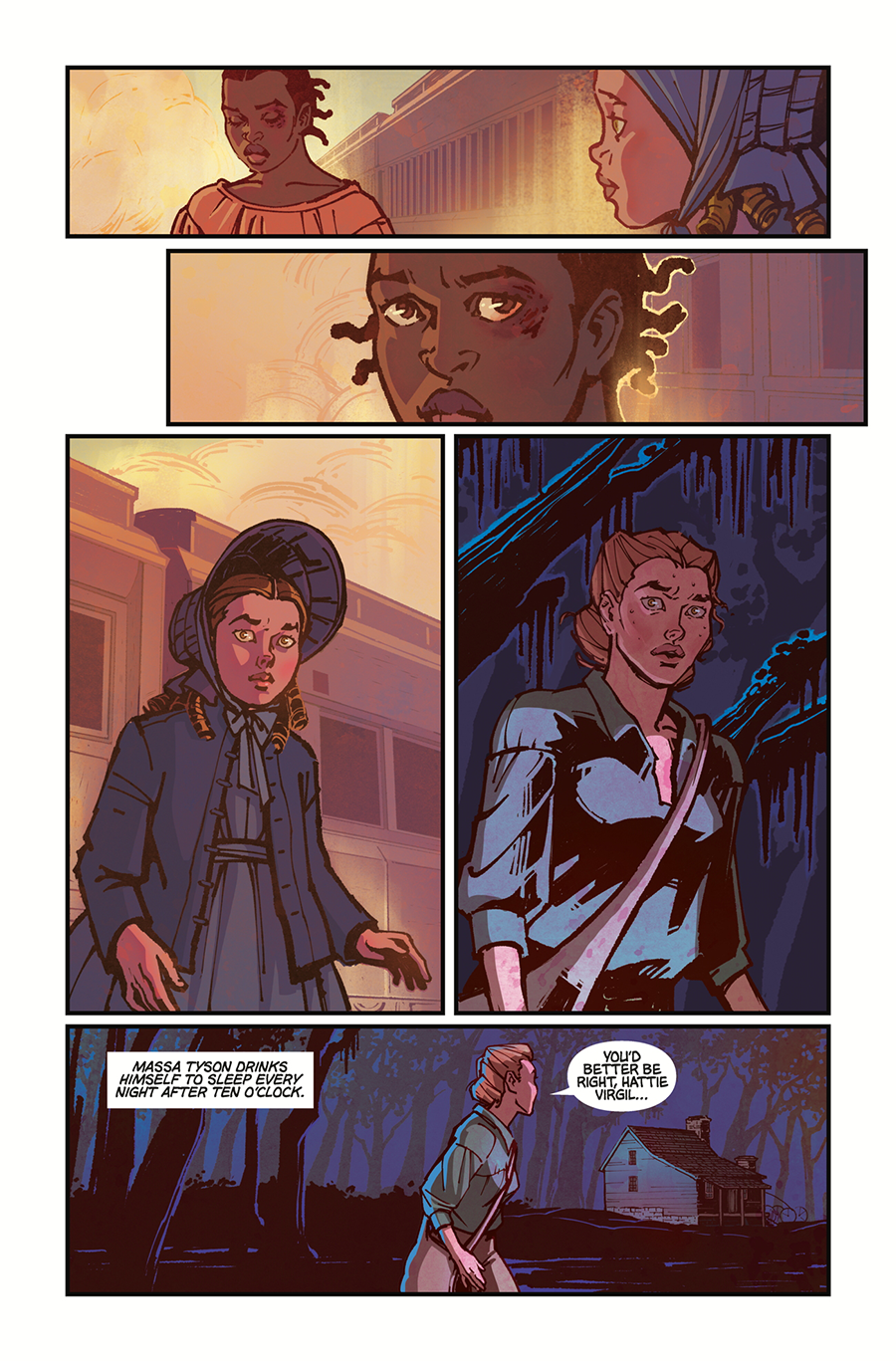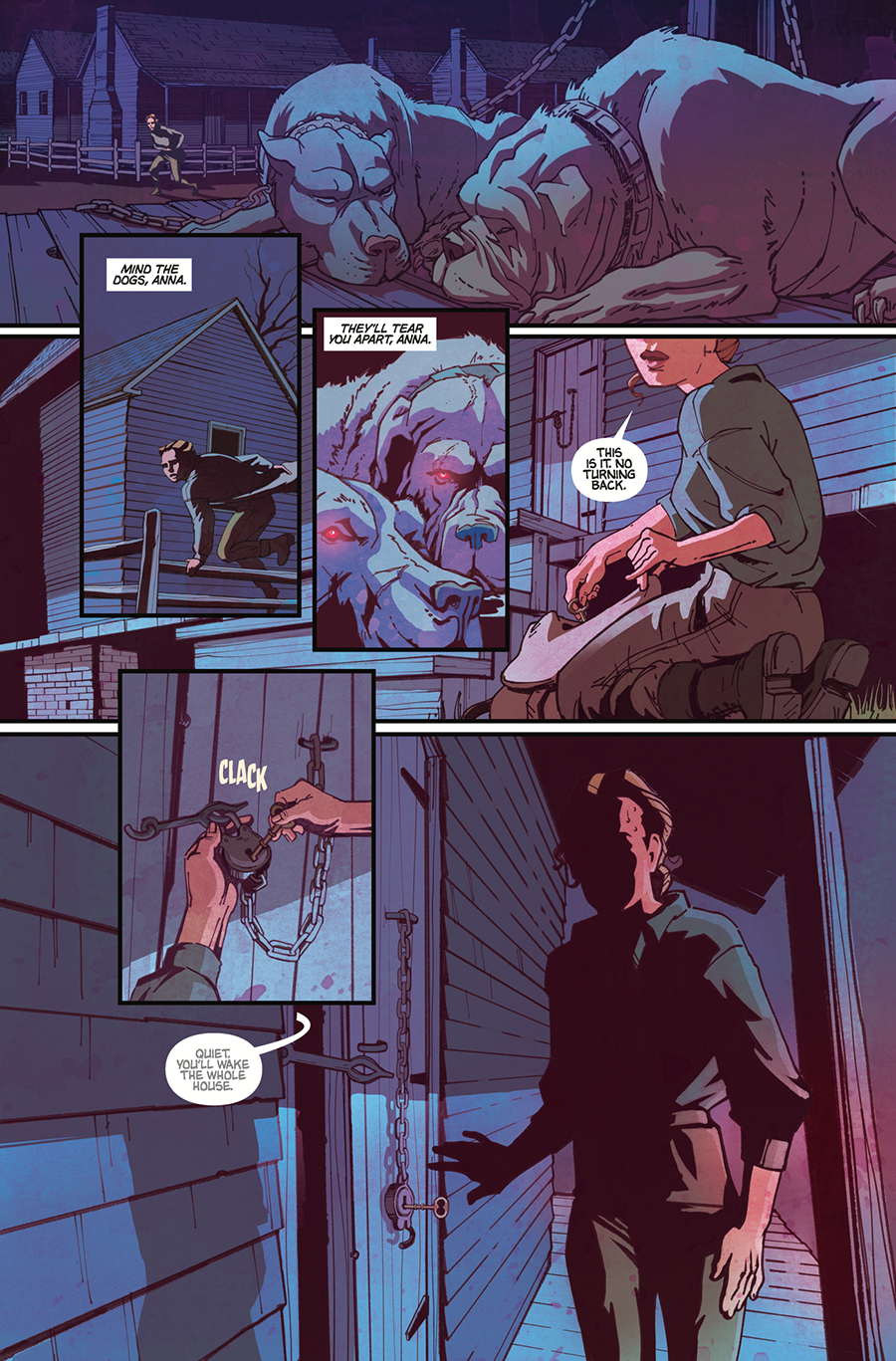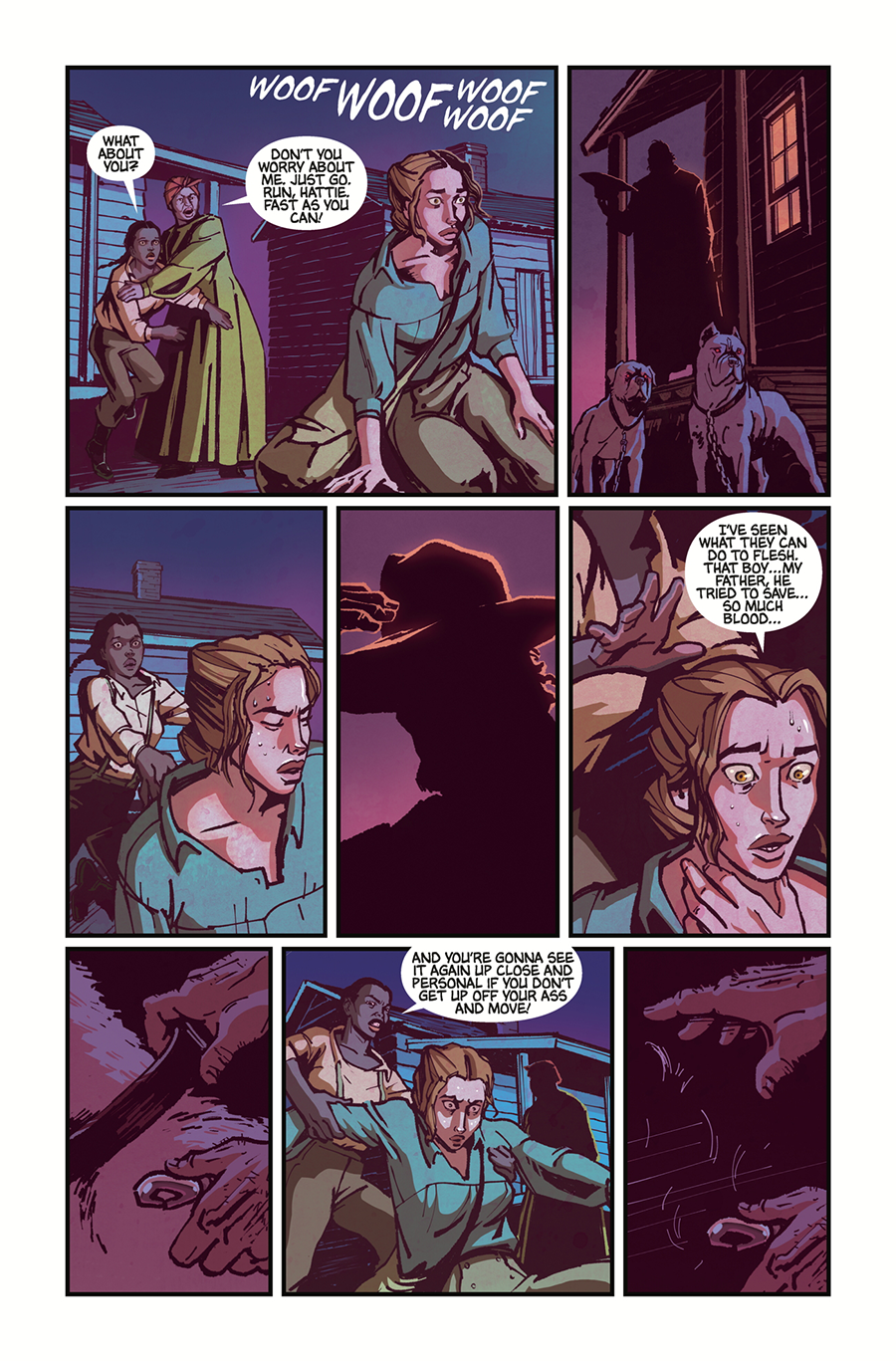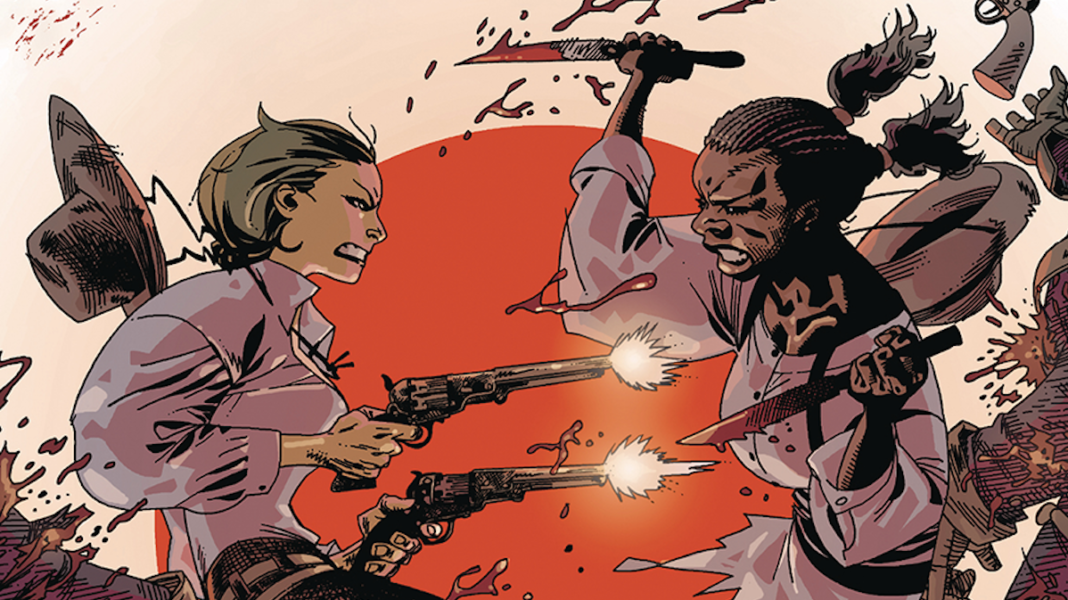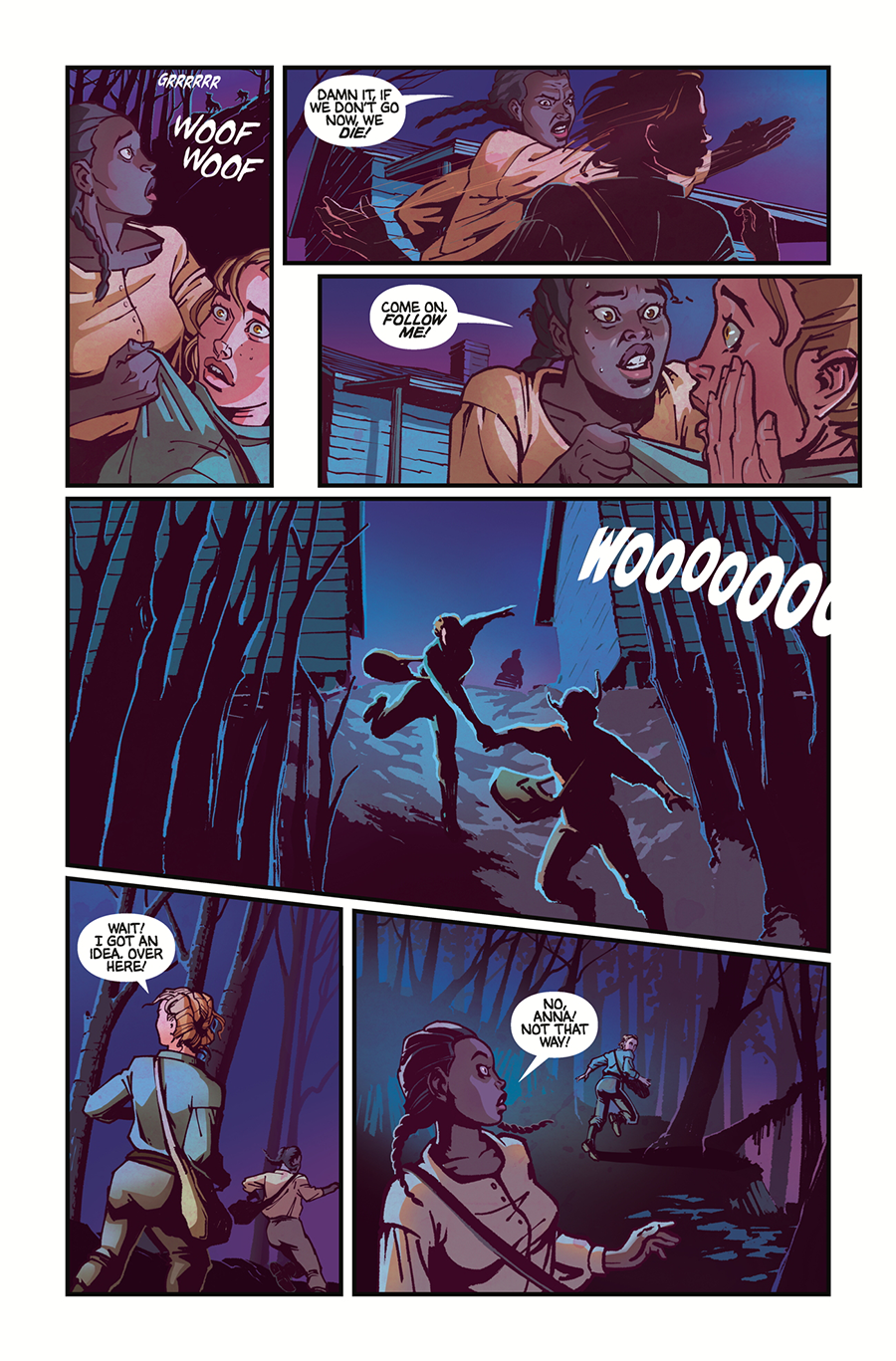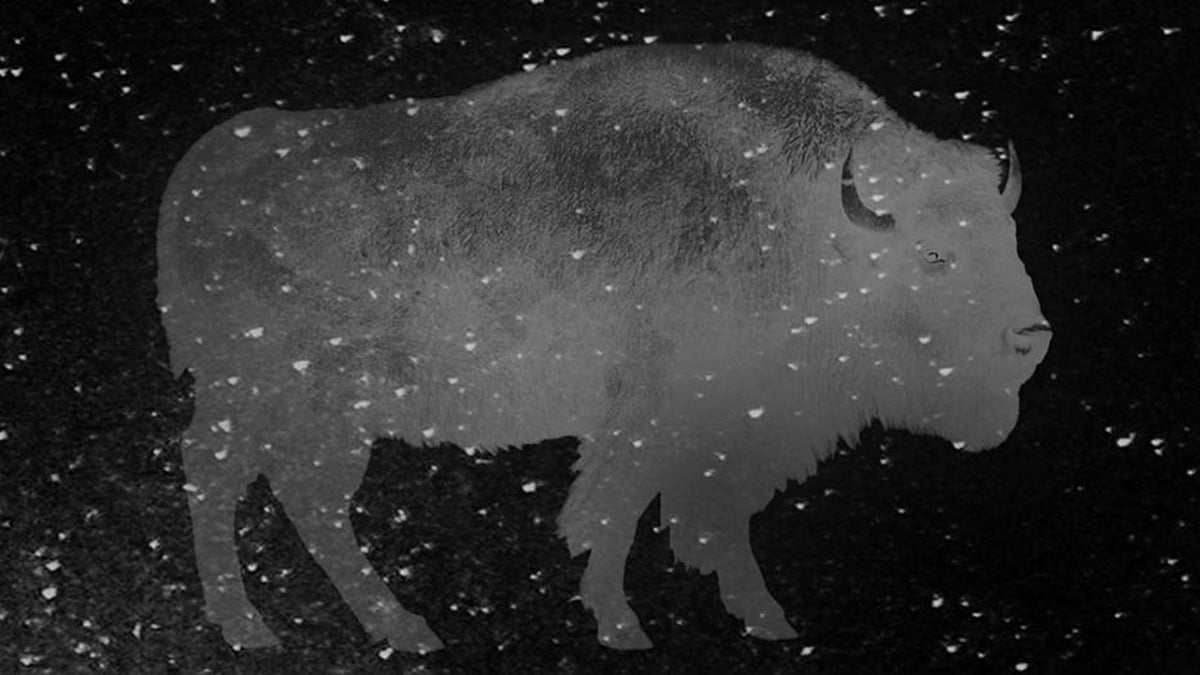This week, Dark Horse Comics debuts Kill Whitey Donovan, a Civil War-era revenge tale written by novelist Sydney Duncan and illustrated by Natalie Barahona. The book marks major firsts for both creators: it’s Duncan’s first comic and Barahona’s first credit as primary artist. The five-issue mini-series tackles subjects including suicide, slavery, sexual assault, and more; it’s a difficult read, but a good one.
Here’s the full solicit text for issue #1:
After Anna Hoyt’s sister commits suicide, she sets off for Atlanta to kill the man responsible for destroying her family — her fiance, Jim ”Whitey” Donovan. But Anna, a spirited though pampered daughter of a prominent doctor, can’t do it alone. To get through the hell that lies between her Alabama home and Atlanta, she makes a deal with one of the Donovan slaves, Hattie Virgil, who has an agenda of her own. In exchange for a chance at freedom, Hattie, a survivor, will lead this unlikely pair on a quest that will change them both forever.
Ahead of the Dec. 4 debut of Kill Whitey Donovan, The Beat caught up with writer Sydney Duncan via e-mail to talk about historical trauma, the series’ cultural relevance in 2019, and how her own experiences inform the work.
Samantha Puc: What inspired you to write Kill Whitey Donovan?
Sydney Duncan: Hattie and Anna’s story came to me in this thunderstruck moment. I loved this idea of these two women, both wronged by this man in different but life-altering ways, setting out on this race-against-the-clock, Inferno-esque journey to exact revenge and reclaim their lives. But I wanted to do it in a way that subverted expectations and challenged conventions. It’s action and adventure, but just beneath its surface, it’s hopefully a little bit more.
Puc: How much research went into crafting this world?
Duncan: A lot. Look, I’m not a historian, but I wanted accuracy. I wanted that dirty realism. What is so fascinating to me about the Civil War is that, in a big way, it was literally this fight over identity. Over who we, as a nation, were going to be as a society. It presented this irresistible world for Hattie and Anna to explore their own identities and motivations. Since we’ve seen the Civil War backdrop of Atlanta before in GONE WITH THE WIND, I felt it would be familiar to the reader. And by having General Sherman’s invasion of the place they were going, we were able to set the story against a clock and hopefully instill a little tension.
Puc: Has anything about writing KWD surprised you?
Duncan: I usually joke that only my mom will be kind enough to read my stuff. Since there’s some violence in Kill Whitey Donovan, she wasn’t exactly a sure thing. So when creators like Brian Stelfreeze and Jason Pearson expressed an excitement for Hattie and Anna’s story—and then wanted to lend their talents to this book as, respectively, editor and cover artist—I could not have been more surprised. But when arist Natalie Barahona came in and just blew us away with her art and her color palette, I was absolutely floored. Honestly, it still feels like it’s happening to someone else.
Puc: Why did you opt to write this story as a comic, rather than another medium?
Duncan: Kill Whitey Donovan actually began as a novel over ten years ago called The Divine Labor. I ended up setting it aside in order to finish a young adult series I was contracted to write. Keven Gardner of 12 Gauge Comics and I were friends and he mentioned he was looking for a female-driven story. I basically pitched him Hattie and Anna over beers at a bad cajun restaurant and he loved the idea.
Puc: Why write this story now, in this historical moment?
Duncan: I think conversations about identity in the context of cultural and societal expectations are always relevant. I don’t think we, as humans, are ever not thinking about who we are or what our purpose is in this life. I wrote this book over ten years ago, contemplating just this, and I think the themes and ideas in it are as relevant now as they were back then. In this modern climate, where politicians are beginning to use hyperbolic terms like civil war, I wonder if we aren’t reflecting enough on our identity and purpose.
Puc: Does KWD reflect on your work as an attorney, or vice versa?
Duncan: I’m a pro bono attorney working with some of the most underprivileged people in the country—people living with HIV, people who are experiencing homelessness, trans women of color. My clients’ struggles are often to find justice in a system and culture that sometimes refuses to acknowledge their existence. Sometimes it’s their own culture and community that would rather forget them than see them. Both of these women in Kill Whitey Donovan are seeking a justice for which there is no real remedy that exists. Though I have some privilege, I do understand some of that struggle as a trans woman in the South. While Hattie and Anna’s journey is unique to them, I hope my experience informs their story’s truth.
Puc: What can you tell me about the protagonists without giving away too many spoilers?
Duncan: First, Hattie and Anna are both capable, strong, badass women. As characters, they are each a reflection of a certain part of the struggle with identity and trauma. Hattie fights against how the world sees her now versus how she used to be seen. Anna’s is an internal conflict with the person she wants to be and the person she truly is. I give little glimpses into their past in the story, offering a window into the trauma that they experienced before we drop into their lives. They aren’t who you think they are because of that trauma. It’s something I’m excited to explore more deeply.
Puc: Do you relate to any particular character more than others?
Duncan: I’m not sure. I can definitely understand both of their journeys—the internal conflict and the external resistance to expression of identity. I’ve experienced both in equal measure.
Puc: What are the challenges of writing this story, whether from a technical or thematic standpoint?
Duncan: This was my first comic book I’ve ever written. And at the same time, it was an adaptation of a novel, which I’ve never done as well. Literally everything was a challenge. My editor, Keven Gardner was my Obi-Wan Kenobi here, being as patient as he was instructive. Thematic presentation was also tough, because as verbose as I’ve been about the deeper stuff, I also wanted this to be an entertaining read. It’s still a woman-scorned revenge story, which I hope is a fun experience. Trauma and identity aside, I also wanted these women to be real and likable. I want the reader to care about their journey. Luckily, I think Natalie’s art really injects their character with humanity, so she did the heavy lifting there.
Puc: What do you hope readers take away from KWD?
Duncan: That’s totally up to the reader. All I want for them is to be entertained and enjoy the experience of reading the comic.
Puc: Is there anything else you’d like to add?
Duncan: Thank you so much for the interest in Kill Whitey Donovan, Samantha!
Kill Whitey Donovan #1 hits shelves Wednesday, Dec. 4 at your local comic shop. You can check out a preview below.
